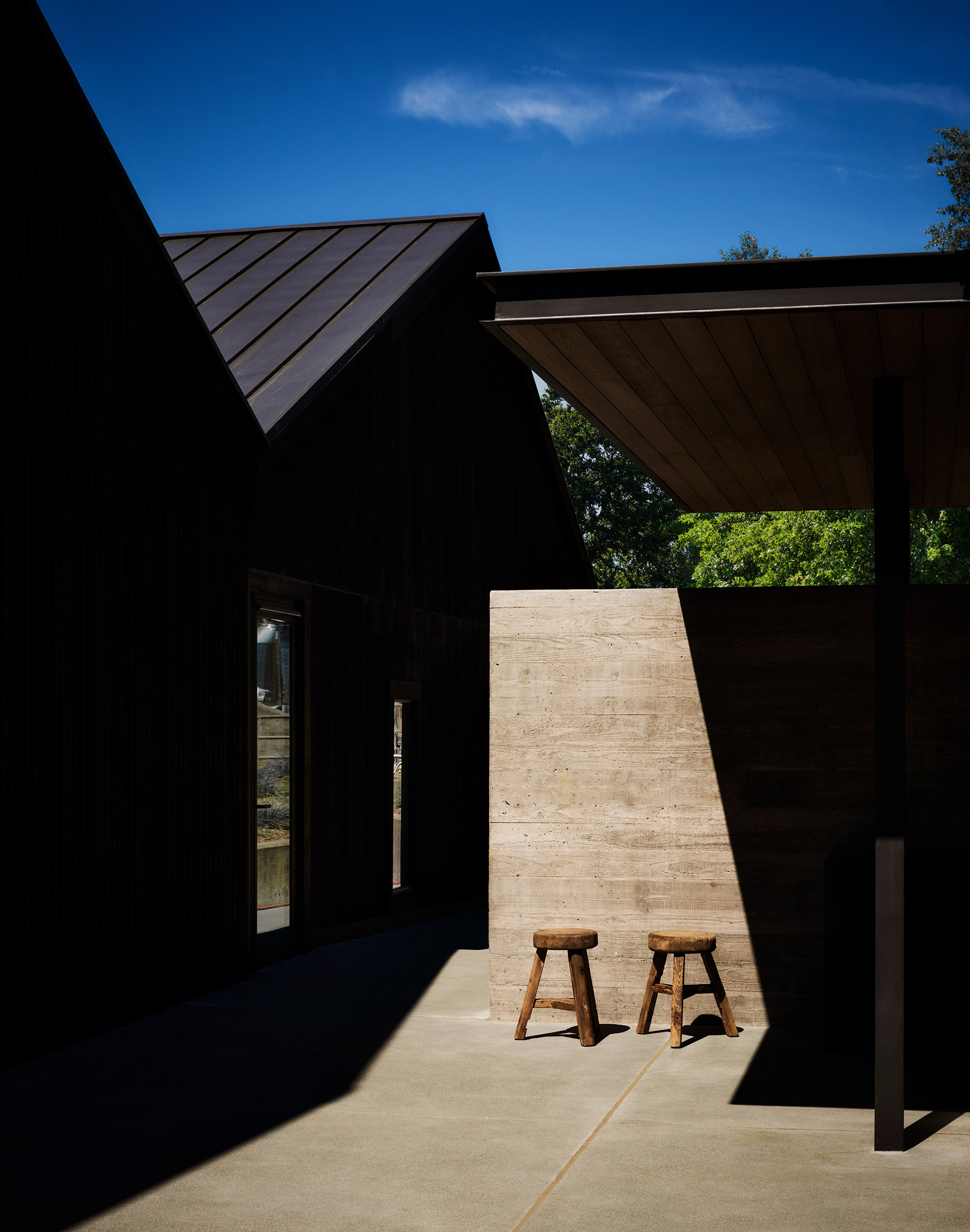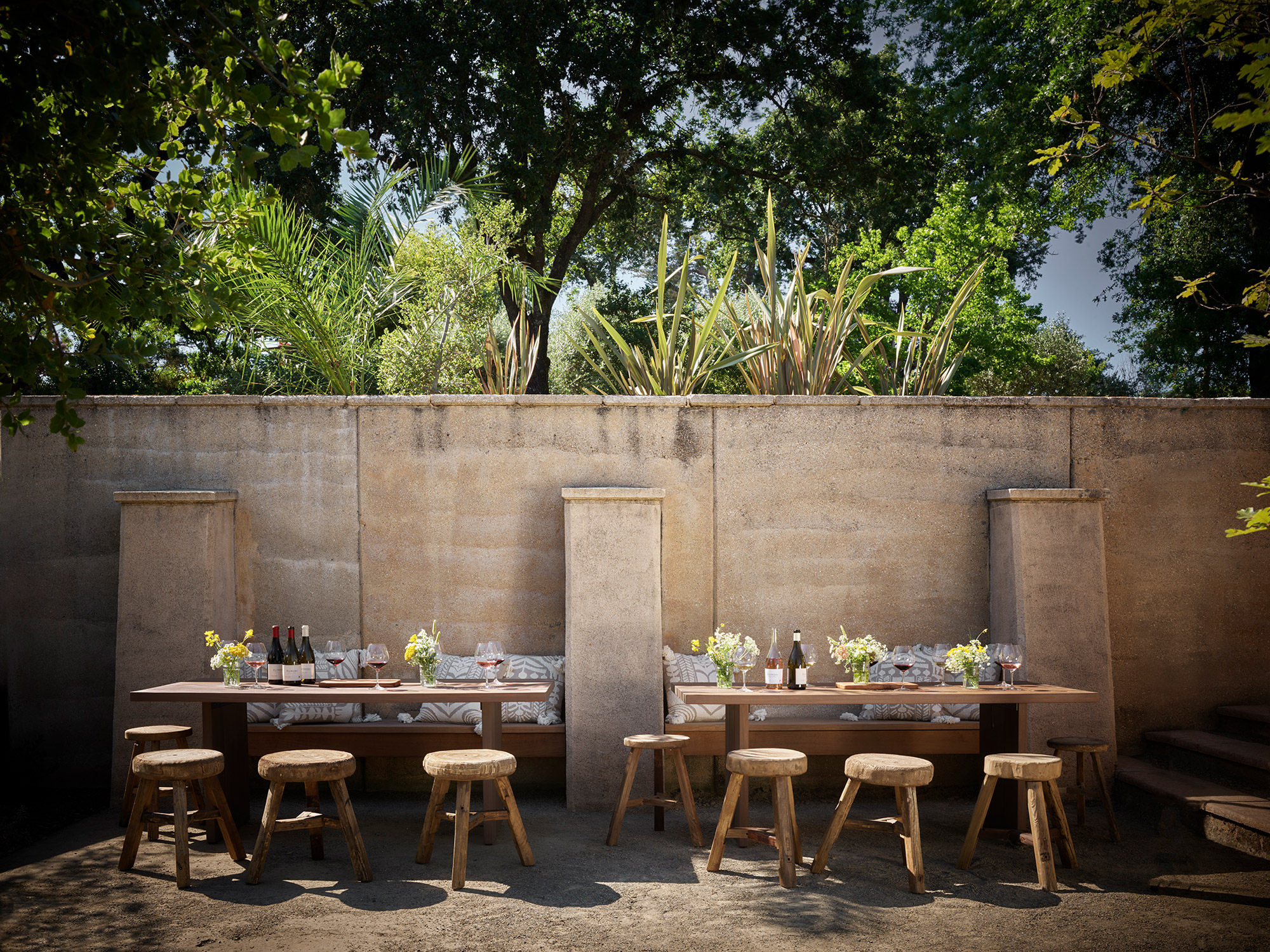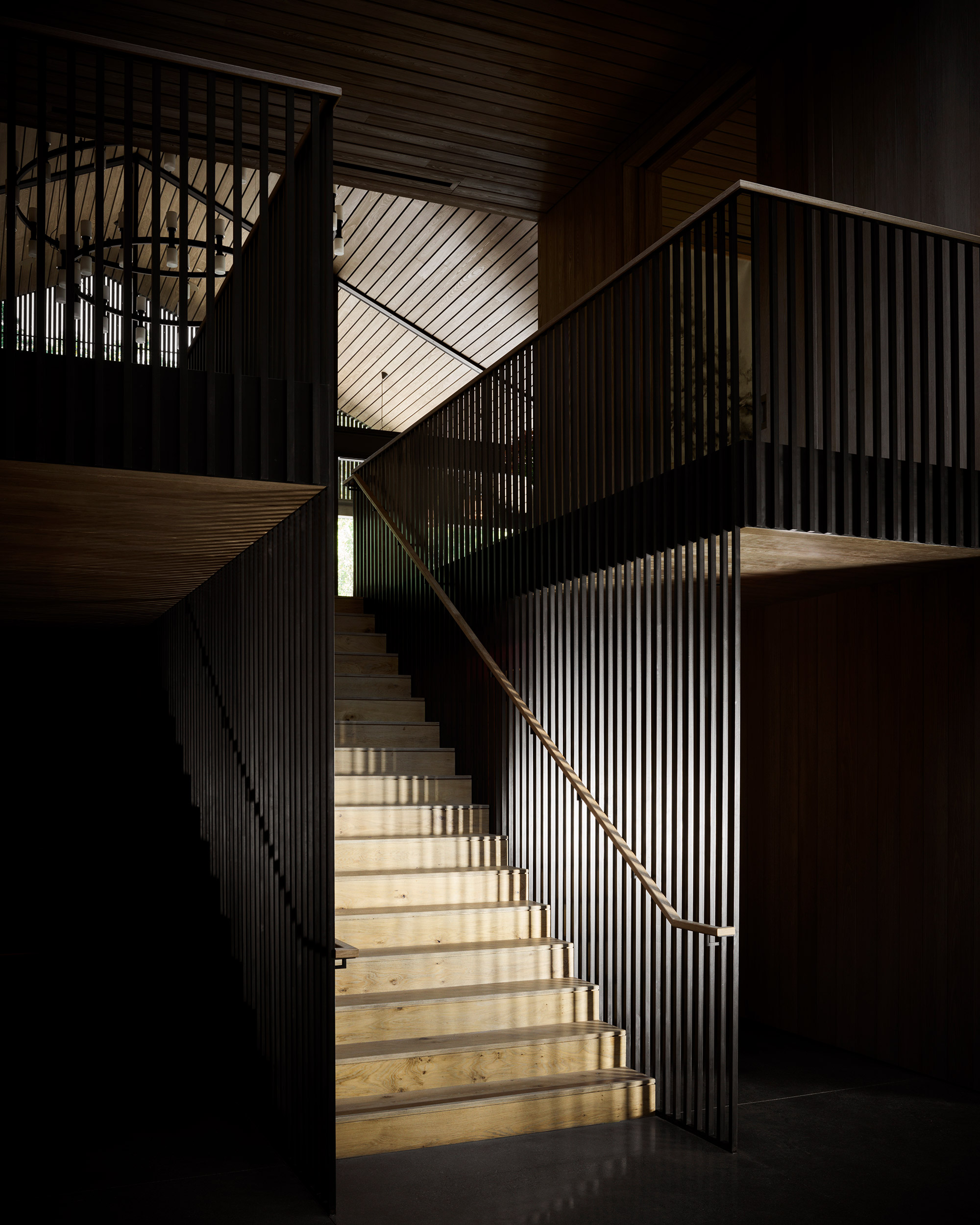A one-of-a-kind wine tasting experience that immerses guests into nature.
Located in Healdsburg, California, in the Russian River Valley, this 15.5 acre estate built as a winery in the 1970s had become deteriorated and in need of a redesign. A local landmark, the place held immense potential. When Flowers Vineyard & Winery started looking for a new venue that could express their love of nature and put their sustainably made wines in a local, more rustic context, the solution came naturally. The winery also wanted to expand their spaces and offer a new guest experience immersed into the landscape. For this project, Walker Warner Architects collaborated with Maca Huneeus Design for the interiors and Nelson Byrd Woltz Landscape Architects for the landscape architecture.

The architecture firm referenced vernacular designs in the updated buildings, to both integrate the venue in its setting and to create a familiar space for visitors. Subtly modernized, the existing industrial structures now feature a black stained finish that blends them into the surrounding redwood grove. At every step, nature takes center stage; from the new pathways that guide visitors to the choice of materials and the sprawling vineyard views. The addition of a hilltop structure creates a seamless transition from indoor to outdoor spaces.

Inside, the venue features bleached cypress siding that contrasts the dark cladding. Airy and bright, the interiors have an authentic rustic feel thanks to the use of wood, wool, and ceramics. Artworks add sophisticated accents throughout the venue. To create a cozy, home-like atmosphere, the team designed a library, living room, and fireplace area.
Sheltered outdoor seating areas immerse guests into the Sonoma Coast landscape. They offer views of the gardens, redwood forest and vineyards as well as chaparral landscapes and the Mayacamas Mountains. The terraced gardens also feature refurbished rammed-earth walls and board-formed concrete walls. Indoors or outdoors, guests can savor Flowers’ Pinot Noir and Chardonnay in a serene setting that celebrates nature and the local community.

The project also focused on sustainability; apart from remodeling existing structures, the teams used older elements as a foundation for a new, refined design. Passive energy systems, skylights and windows that optimize light, as well as wood slats that offer extra shade in the summer are some of the strategies implemented at House of Flowers. Site-specific functional wood installations made from salvaged timber by artist Evan Shively reinforce the project’s sustainable approach further. Photographs©: Douglas Friedman.














